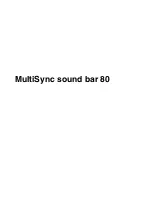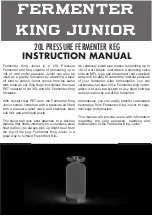
10
with lenses which comply with DIN regulations.
2.18 Wear the appropriate gloves and protective
clothing to protect yourself from the UV
radiation from the arc, sparks, burns from hot
metal parts and slag spatter or electric shocks.
The complete protective clothing you wear
and all the accessories must comply with the
“Personal Protective Equipment” Directive.
2.19 Arc welding may release vapours which may
be harmful. Ensure that you have the requisite
fresh air supply at all times.
2.20 People in the vicinity must be at least 15 m
from the arc source.
2.21 Important. Special regulations apply in
atmospheres where there is a potential risk of
fire or explosion.
2.22 Wear strong, insulating footwear. Open
shoes are not suitable. Falling hot metal parts,
slag or sparks may cause burns.
2.23 Wear head protection for working above
head height.
2.24 Welds which must satisfy safety regulations
may only be completed by specially trained
welders (for example towing hitches, pressurised
tanks, rails, gas and compressed air lines).
2.25 Important. Always attach the earth terminal
to the object you wish to weld. Never attach the
earth electrode to the welding power source
casing.
2.26 The machine is not suitable for commercial
use.
2.27 If there is an increased risk of electric shocks
(in constricted areas with electrically conductive
walls, in wet or hot rooms), the idling voltage
design value must not be greater than 42 V on
small welding transformers. In these cases the
machine must not be used.
2.28 Personnel in the vicinity of the working area
must be notified of the danger of looking into
the arc radiation with naked eyes by means of a
sign reading “CAUTION! DO NOT LOOK INTO THE
FLAMES”.
2.29 Workplaces must be screened in such a way
as to provide protection to personnel near them.
Unauthorised persons are to be kept away by
suitable measures.
2.30 If the workplaces are permanent, the walls
should not be painted in light colours or made
of highly reflective material.
2.31 Windows must be secured to prevent the
radiation passing through them or reflecting off
them at least up to head height.
Unpacking
Important.
Danger from missing parts.
Carefully take all the parts out of the box and
place the tool on a at work surface. Check that
the contents are complete (see Figures 1 and 2).
If there are any parts missing, do not use the tool
until all the missing parts have been delivered
and correctly installed. Failure to observe this
warning may give rise to a considerable risk of
injury.
Do not throw the packaging material away until
you have carefully inspected the tool, ensured
that all the parts are tted correctly and you have
started the new tool without any problems.
Summary of Contents for 120 IV
Page 2: ...2 B2 11 2 1 6 9 10 8 B3 B3 7 4 5 3 13 12 ...
Page 16: ...16 ...




































